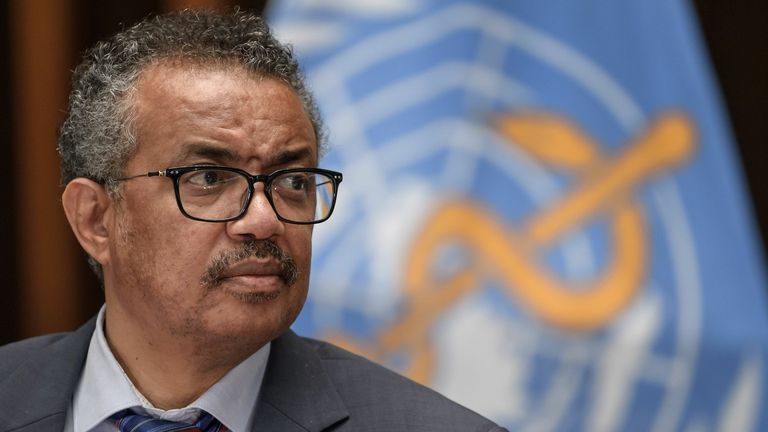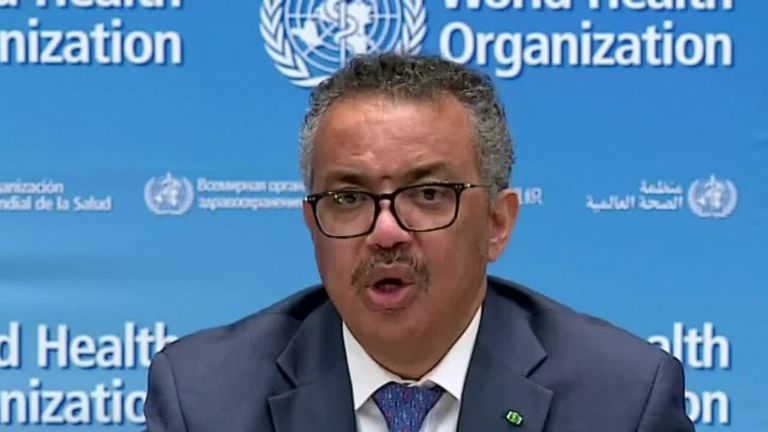The head of the World Health Organisation says he hopes the coronavirus pandemic will be over in two years.
The Spanish flu pandemic of 1918 took two years to end, he said.
“Our situation now with more technology, of course with more connectiveness, the virus has a better chance of spreading, it can move fast,” Tedros Adhanom Ghebreyesus said.
“At the same time we have the technology and knowledge to stop it.”
More than 22 million people have tested positive for coronavirus globally and nearly 800,000 people have died, according to a tally by Johns Hopkins University.
Dr Tedros warned that while some countries have managed to drive down transmission of COVID-19, “progress does not mean victory”.
He pointed to several countries which are experiencing fresh outbreaks after long periods with little or no cases, such as New Zealand and Vietnam.
“These countries are a cautionary tale for those that are now seeing a downward trend in cases,” he said.
The WHO’s director general said individuals must take their own responsibility for helping to stop the spread of coronavirus.
There is hope a vaccine could put a stop to the global health crisis, but Dr Tedros said there is no guarantee one will be found – and even if it is, “it won’t end the pandemic on its own”.
“We must all learn to control and manage this virus using the tools we have now, and to make the adjustments to our daily lives that are needed to keep ourselves and each other safe,” he said.
Another WHO expert told a briefing that much more research is needed on the impact of coronavirus mutations.
“A special working group has been formed to identify mutations… and we’re looking at how we can better understand what the mutation means and how they behave,” epidemiologist Maria Van Kerkhove said.
One of the mutations found in Europe, North America and parts of Asia may be more infectious but appears less deadly, a prominent infectious diseases doctor said earlier this week.
Paul Tambyah, senior consultant at the National University of Singapore and president-elect of the International Society of Infectious Diseases, said the increasingly common mutation D614G had coincided with a drop in death rates.


